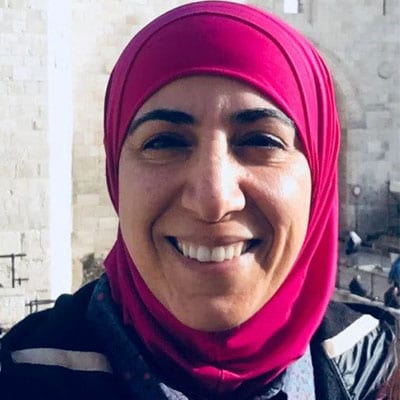Every aggression waged by the Israeli war machine against the Palestinian people is supported by international mainstream media platforms that falsify facts and justify Israel’s “right to defend itself”. In reaction, local media distributes images of bleeding, maimed and shell-shocked Palestinians emerging from the rubble caused by Israeli bombardment.
These images are generated to provide evidence of the historical injustice done to our people – and sometimes also, due to an opportunistic desire on the part of the press, to provide thrills and to obtain more “likes” and “shares” on social media platforms.
As a result, we see wide-spread distribution of shocking content and images of shattered people grieving as the bodies of their loved ones are lifted out of their ruins. Some of these media intrusions dare to invade children’s privacy and photograph them without their permission, with little considerations for their psychological state and the impact this image may have upon the child in the future.
READ: Stop comparing Israel to Apartheid South Africa; it is worse
I would like to mention as well the following important points, because they are often overlooked:
- The publication of these pictures of pain violates the privacy and dignity of the subjects and their families, insofar as persons in a state of shock, distress, panic, and pain are not able to grant or withhold informed consent to be photographed or to have such photographs publicised.
- The distribution of images of blood, body parts, and humiliating treatment competes in our memory with the beautiful images we would like to preserve of our loved ones. Instead of treasuring in our mind’s eye the reassuring smile and the elegant clothes which we usually dress ourselves for photographs, we are haunted by the most painful images of our loved ones for years after their loss. This complicates the processes of mourning and healing for their traumatic death.
- The spread of these images among the Palestinian people during times of war creates terror among those still enduring bombardment and exposed to other types of aggression. This contributes to the damage to public morale; it supports the systematic psychological warfare which is being waged against civilians to terrorise us and to break our will.
- Let us remember that among us there are a great many individuals from past generations who were previously traumatized by war and experienced vast circles of loss. The distribution of traumatizing images of war and devastation triggers the wounds of those formerly afflicted—as if they were experiencing the event personally in the here and now.
- Sometimes there are even worse psychological consequences to the traumatising media content, such as the development of apathy and emotional numbness in the face of the blood and pain emanating from these images. In this way, such images lose their ability to produce any human reaction from their viewers – who calmly eat pizza while watching these images on TV.
- It is worth noting that the presence of cameras may cause people to mask their genuine feelings in an effort to maintain emotional restraint before a public audience. We see a woman holding back her tears despite her loss, trying to send her viewers a message of pride and fortitude.
- It is apparent that the official regimes in the Western world who control world politics and are complicit in the Israeli settler colonial project are not affected by images of our trauma, rather they find these images pathetic efforts to beg for sympathy. Those in the world who are in solidarity with our cause do not need heartbreaking images in order to support us; they build their solidarity on their knowledge of history, the Palestinian narrative and the facts on the ground.
Palestinians need the solidarity of others who recognise us as active subjects and fighters for freedom, not as bleeding victims.
My call to “the camera people” is to urge them to be responsible in the face of Palestinian blood and pain. I ask them to try to convey the facts in a way that honours Palestinian sacrifices and does justice to us as Palestinians – whether as photographic subjects or as viewers.
My call to the public is to refrain from publishing traumatising media content disrespectful of human dignity and wellbeing, and to withhold it from further distribution.
READ: Investigation finds 33% of UK cabinet members funded by pro-Israel groups
The views expressed in this article belong to the author and do not necessarily reflect the editorial policy of Middle East Monitor.

![Palestinian kids light candles in memory of Abu Hattab family killed in the Israel attacks on Gaza, on May 23, 2021 in Gaza City, Gaza.
[Ashraf Amra - Anadolu Agency]](https://i0.wp.com/www.middleeastmonitor.com/wp-content/uploads/2021/05/20210523_2_48430092_65448235.jpg?fit=920%2C607&ssl=1)







